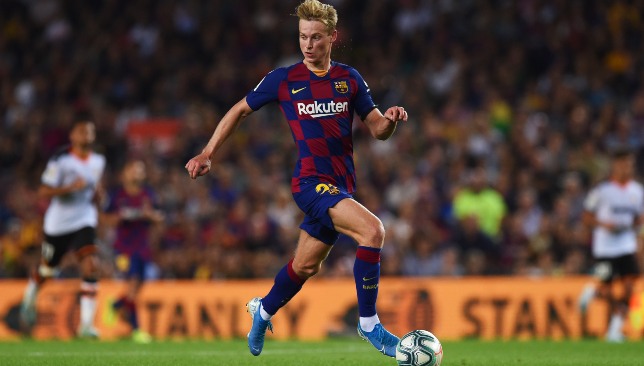
We’ve all been there. A player scores an extraordinary goal on the big stage and we can’t wait to go out and try to replicate it.
It could be a stunning volley, a diving header, a mesmerising solo run or even that spectacular bicycle kick.
But as you mature, an appreciation of the finer aspects of a player’s game manifests and it’s these technical intricacies which can give you an edge as an amateur footballer.
It may be a particular run, clever movement, a specific pass or feint.
Elite players do simple things with elegance and precision. Mastering some uncomplicated yet incredibly effective aspects of the game can take yours to the next level.
And who better to learn from than the absolute best doing the business at the highest level?
Over the course of this series, we’ll put some of the best players under the microscope, identify a key attribute of theirs and learn to incorporate it into our own game.
In this edition of the ‘Learn From’ series, we examine Frenkie de Jong’s method of evading pressure in midfield with his quick turns and work out how to replicate it.
AIM
We know all about the iconic ‘Cruyff turn’ but to learn how to evade pressure and transition play in midfield quickly the ‘De Jong turn’ is the one which will need to be mastered.
Of course, it’s a fairly simple move that many of us have used on the football pitch already and not an innovation that the young Dutchman can take credit for. However, his flawless execution of it and its variations as well as the frequency with which he employs the turn, to great effect, has made it his trademark.
As a deep-lying midfielder, this manoeuvre is particularly useful when picking the ball up well inside your half and facing your own goal. However, it’s fairly handy further up the pitch as well.
When playing exclusively as a regista at Ajax, De Jong used this turn with great frequency as he received possession from his centre-backs or goalkeeper before progressing the ball through midfield.
At Barcelona, the Dutchman does not always find himself in the same positions he used to but has displayed the efficacy of the turn in different areas of the pitch.
Essentially, the move is about turning quickly and sharply with the ball in order to break free of your opponent closing you down from your blind side. It involves a good first touch, close control and awareness.
You turn in a tight circle on your stronger side, using the outside of your boot to guide the ball.
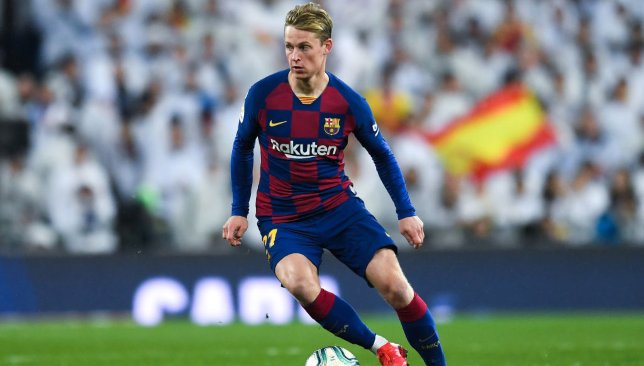
EXECUTION
In trying to emulate De Jong’s turn, you need to nail down three key aspects of it.
The first step, fittingly, is to ensure your first touch is perfect. Don’t rush towards the ball and risk your momentum taking you a few paces in the opposite direction to the one you eventually want to go in.
You also want to be able to come to a stop soon after gaining possession so you’re primed to turn while your marker is still in motion. As a result, your opponent will be less capable of reacting to your turn, increasing the chances of turning successfully. While taking your touch, do a quick head check to see where your opponent is.
Once you have that picture in your head, you make your move. If your opponent is in close proximity then the best course of action is to turn immediately. However, if you have time, that means your marker has time to react to a turn too. Throw in a feint by shifting your weight in the opposite direction before then commencing the turn on your stronger side.
When beginning the turn bend your knees and crouch slightly to lower your centre of gravity, enabling you to turn quickly and in a tight circle.
Finally, once in the turn, use the outside of your boot to guide the ball and then accelerate forward once your opponent is on your shoulder. Your bent knees will help you launch into a sprint, taking you clear of the marker.
EXAMPLES
A) Granada v Barcelona
The first scenario demonstrates the turn in its simplest form. De Jong is aware of the Granada player approaching him and his first touch sets him up for the turn which he executes with perfect timing. He guides the ball well with the outside of his right boot as he spins away in total control.
De Jong meets the ball and spots an opponent closing him down.
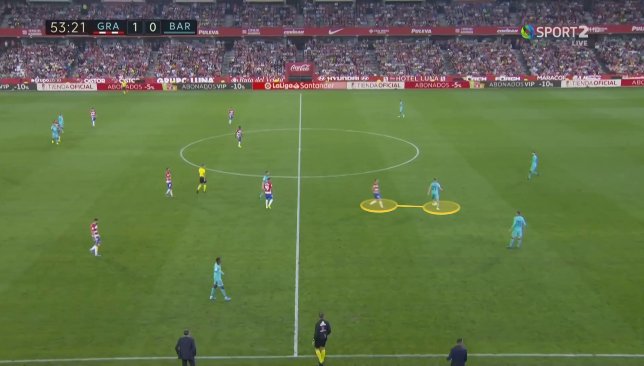
He times his turn perfectly and shows good control to spin away.
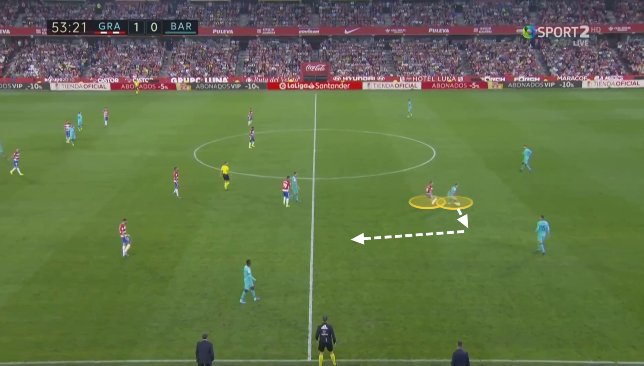
B) Real Madrid v Ajax
De Jong leaves two players for dead in this example. Vinicius Jr. is cutting off a potential pass back to Matthijs de Ligt aggressively while Luka Modric looks to contain the midfielder. His awareness of the huge space behind him is key here. He motions towards the sideline, sending Modric the wrong way. A 180-degree turn sets him free from both players with plenty of space to run into.
De Jong faces pressure from two players but is aware of the space behind him.
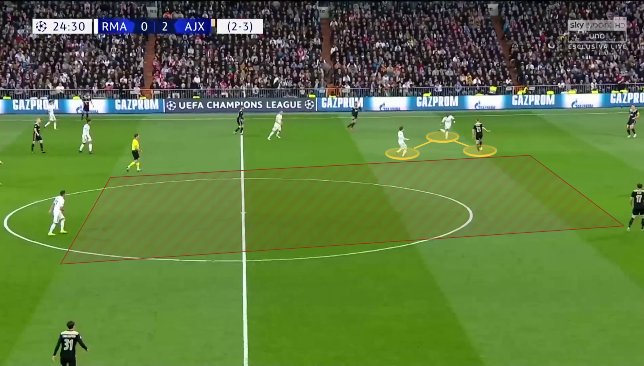
His initial movement sends Modric the wrong way.
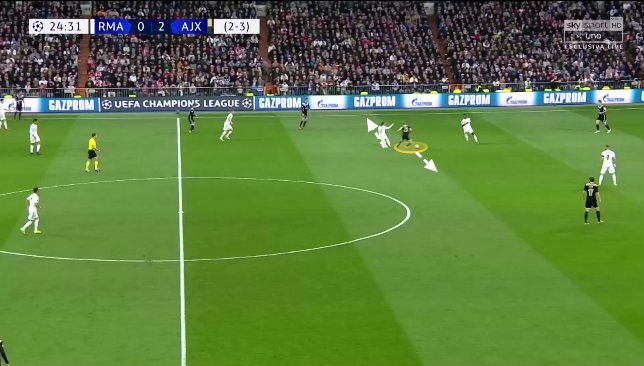
He spins away from Modric and the passing lane back to De Ligt.
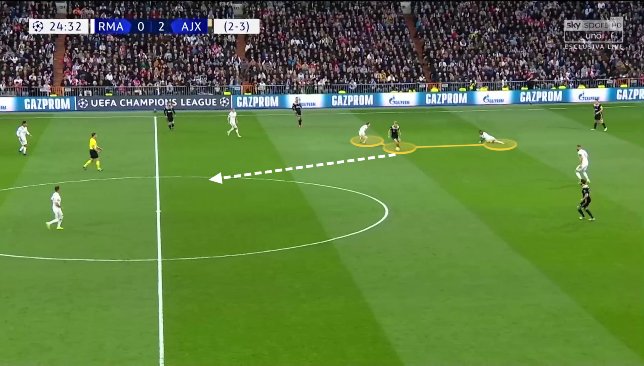
C) Barcelona v Real Sociedad
In this scenario, De Jong throws in not one but two feints to shake off his opponent. The Real Sociedad man had time to react to the Dutchman’s first movement but had no answer at the second time of asking.
De Jong receives the ball just ahead of the halfway line.
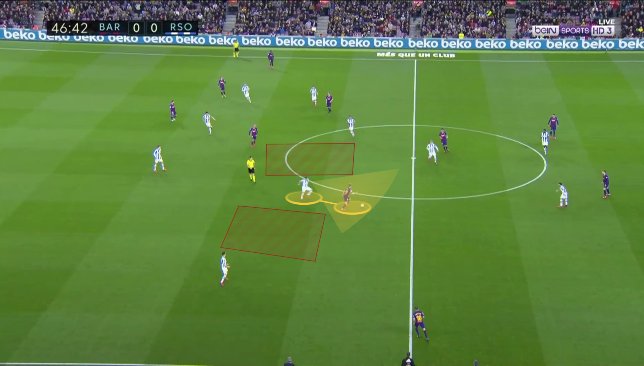
He feints to his left before shifting to his right.
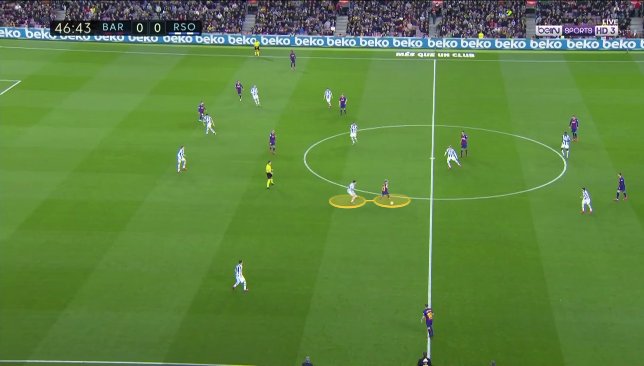
He changes direction again while his marker is committed.
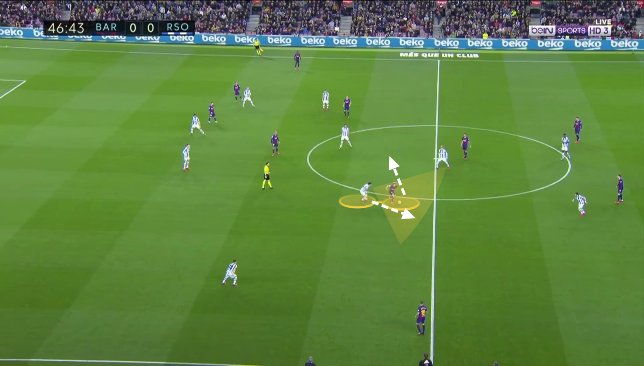
He leaves his opponent in his wake and accelerates into the middle.
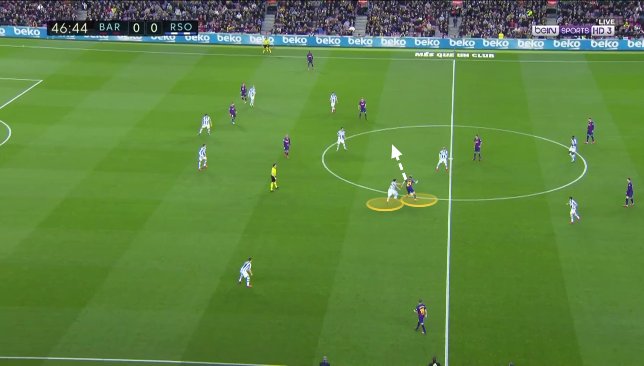
D) Barcelona v Slavia Prague
The challenge approaches De Jong from his left on this occasion, one he’s able to spot in his peripheral vision. Here, he demonstrates how a turn or anything more elaborate can be unnecessary at times. With his opponent in close proximity and arriving at pace, he utilises that momentum to evade him. It’s a confined space he ventures into, but because of his opponent’s momentum, he doesn’t need a lot of room to escape him.
De Jong can see the pressure arriving from his left.
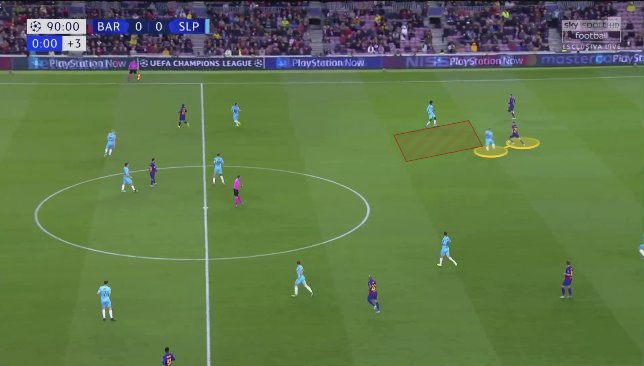
With his opponent closing in quickly, he simply knocks the ball into space.
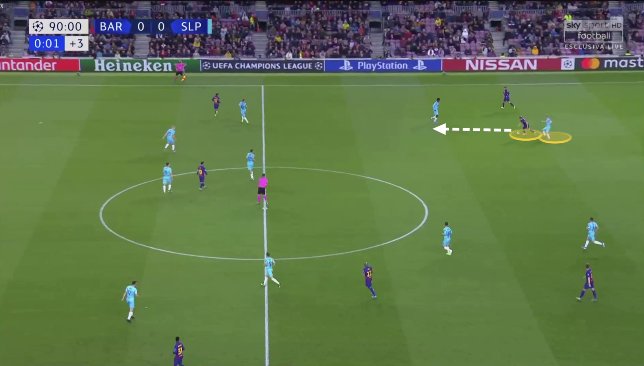
PRACTICE
Touch – Focus on running towards passes and slowing down in time to cushion the ball within a tight radius. Stop it absolutely dead though and you risk getting it caught under you which would likely then require another touch to get it out of your feet. Finding the right balance is key.
Awareness – Now, practice the same move with pressure. Glance over your shoulder and try to gauge where your marker is when approaching the ball. Assess your options again when in possession. It may sound time consuming but eventually it will become second nature.
Turn – Work on keeping the ball on a short leash during the turn. Crouch low to ensure that the radius is kept small. Once that’s mastered, work on feinting one way before executing the turn on the other side.